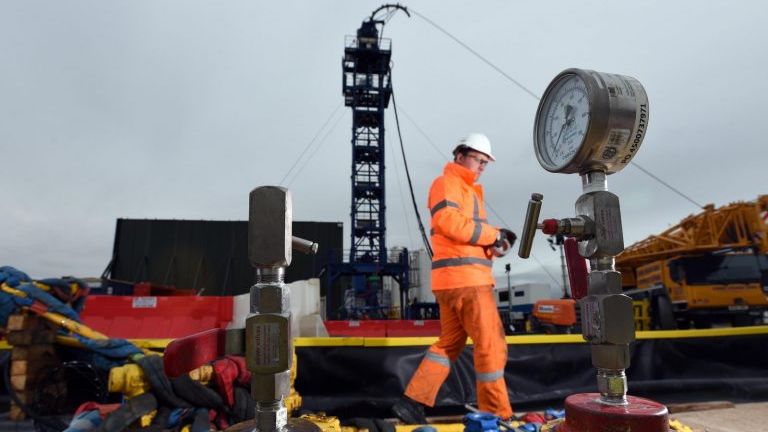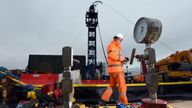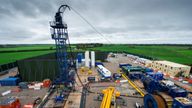Ineos challenges government to allow it to try fracking in England
Ineos, one of the world’s largest energy and chemical companies, has challenged the UK government to allow it to develop a fully functioning shale drilling test site, in a bid to prove that the controversial technology is safe and secure.
The move comes as the UK searches for ways to secure its energy supply in the face of soaring fuel costs following Russia’s invasion of neighbouring Ukraine.
Gas prices in Britain are currently 10 times those in the US.
Over the weekend, Ineos founder Sir Jim Ratcliffe called opponents of fracking an “ignorant minority”.
In November 2019, the government banned fracking in England after research raised fears over the risk of earthquakes.
Prime Minister Boris Johnson said he had “very considerable anxieties” about fracking, which is a method of extracting shale gas from deep underground.
But last week, the government commissioned a new report into the impact of fracking, giving the British Geological Survey (BGS) three months to assess whether there had been any changes to the science around the practice.
Speaking to Ian King Live on Monday, Ineos director Tom Crotty said that the company had never been “allowed to develop the science to allow people to make a rational decision”.
“Let’s make a decision based on facts and good science,” he said, adding that the cost of such research would probably be £5m to £6m.
The company has licences all across the north of England, and has asked to work with the UK’s Oil and Gas Authority (OGA) to help identify which of those sites would be the best to operate on.
Ineos wants to “pick a site where you’re going to have minimal impact on the environment, away from faults”, Mr Crotty said.
The moratorium in 2019 came after a report by the OGA found it was not possible to accurately predict the likelihood of strength of earthquakes linked to fracking operations.
But if allowed to develop its test site, Mr Crotty said, within 12 months Ineos would have “meaningful data” about the viability of fracking. It would then be a further three or four years to get into production.
In a statement, Sir Jim said: “The UK is in the midst of an energy crisis with ever increasing prices driving people into fuel poverty whilst giving huge sums of money to oppressive regimes.”
“It’s a ridiculous situation with so much gas under our feet and we are today offering to drill a shale test site to show that a competent operator can be trusted to develop the technology safely,” he added.
There were a series of seismic tremors at a fracking site in Lancashire in 2019, including a 2.1-magnitude tremor at Cuadrilla’s site near Blackpool in August – days after a 1.55-magnitude movement.



